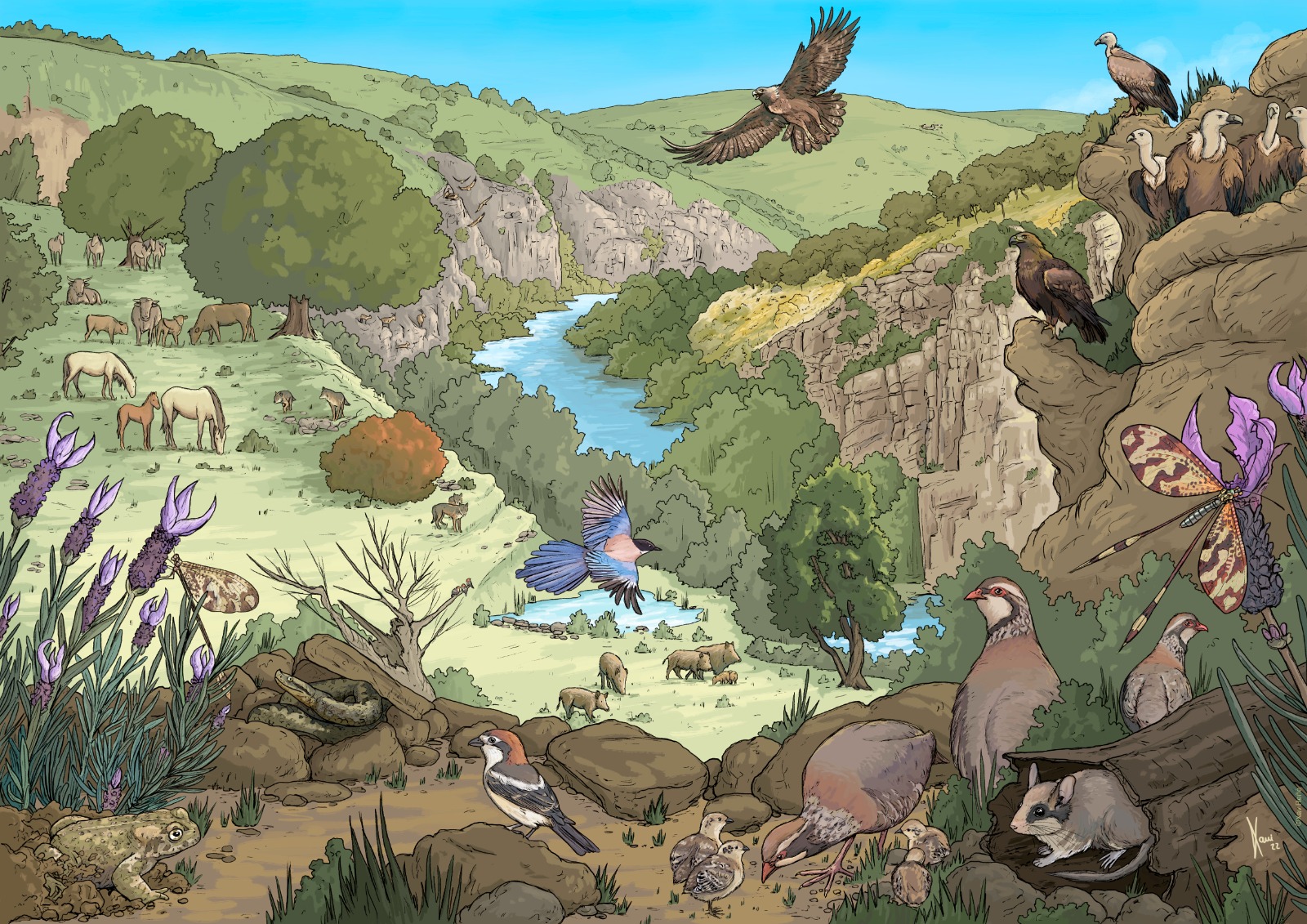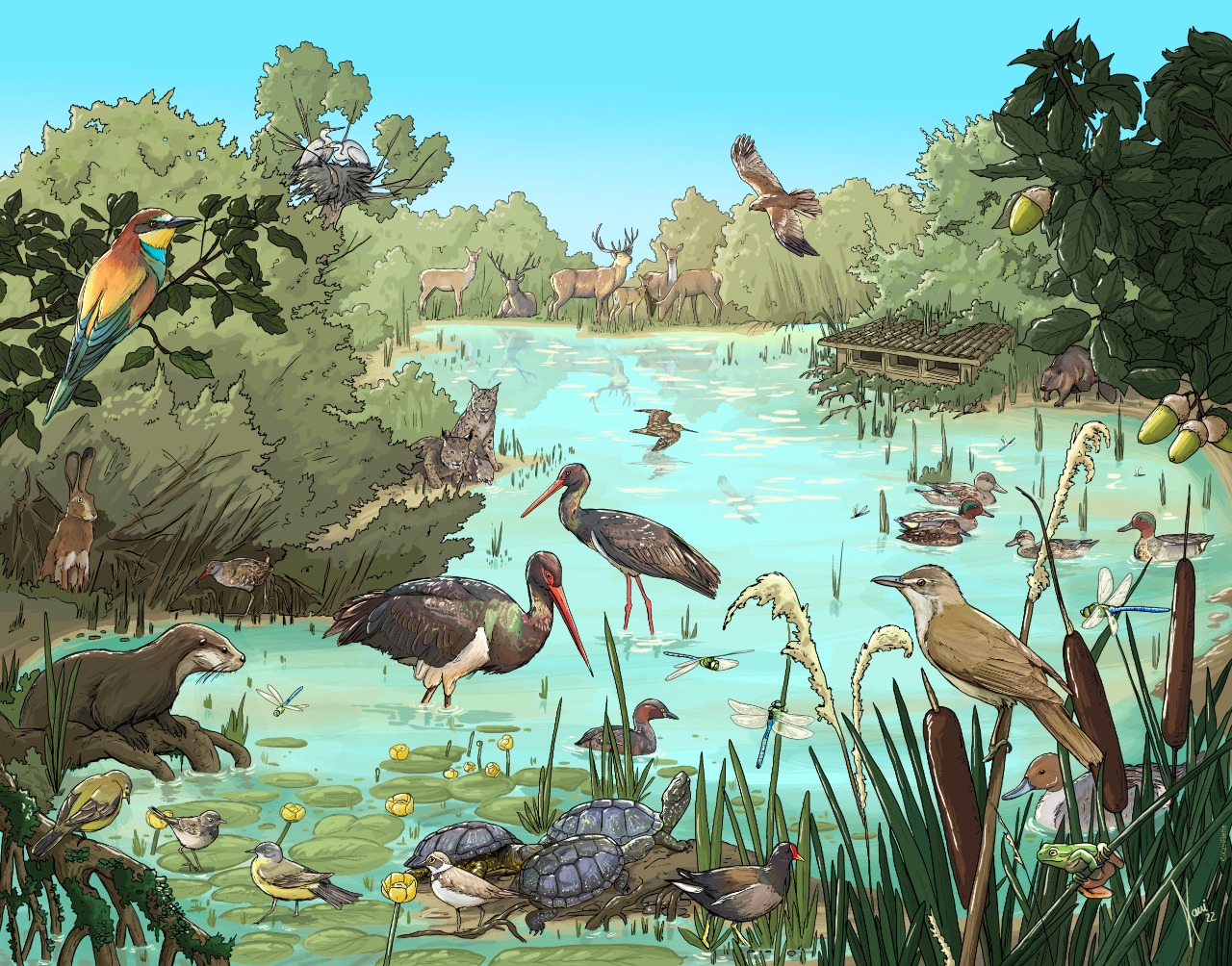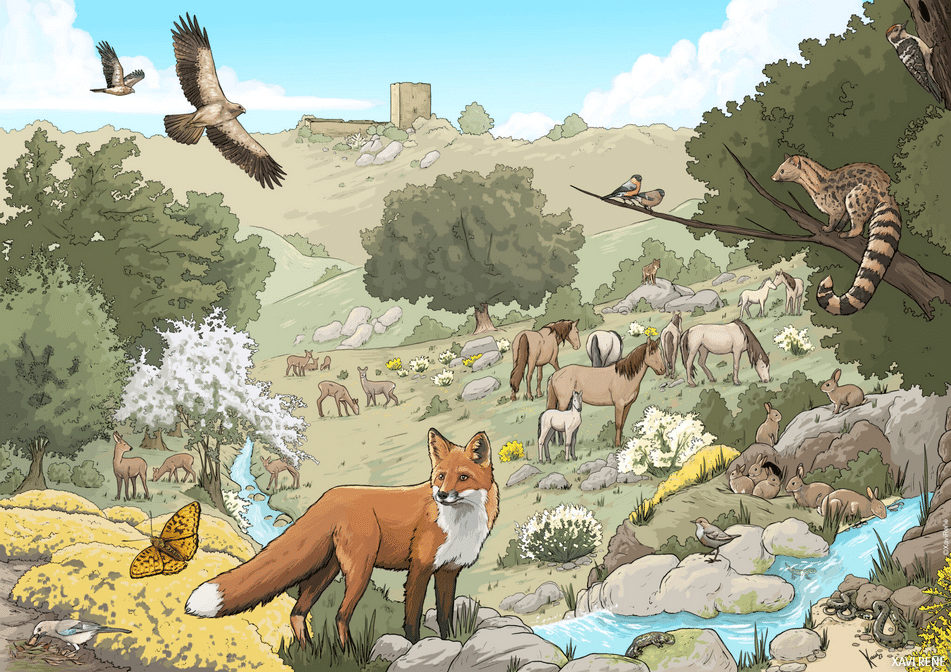What is Rewilding?
Rewilding is a progressive approach to conservation. It’s about letting nature take care of itself, enabling natural processes to shape land and sea, repair damaged ecosystems and restore degraded landscapes. Through rewilding, wildlife’s natural rhythms create wilder, more biodiverse habitats.
Rewilding Europe
Rewilding is allowing nature the space and time it needs to recover and thrive, without major human intervention. However, it is necessary to understand what may be missing from the landscape (key species, natural processes) and restore some of those missing pieces in order to give nature a boost and speed up its recovery.
Rewilding in the Greater Côa Valley
In parallel with the incredible natural values of the region, the Greater Côa Valley represents a unique opportunity to apply the principles of rewilding in the region due to the high levels of rural abandonment.
This opportunity can be exploited by taking a large-scale perspective of the landscape, working to improve connectivity between natural areas and, at the same time, supporting sustainable business models in the region that can stimulate local economies and bring additional value to communities in the area.
Rewilding Portugal is managing 3 areas in the Greater Côa Valley, under the conservation principles of rewilding.
Vale Carapito
is located near Vilar Maior, a village with medieval features, on the central part of Portugal and close to Spain.
Crossed by the Cesarão River, a small tributary of the Côa River, this valley contains natural values characteristic of the territory. The riverside gallery of ash trees runs through meadows where some cattle and Roe Deer still graze. The slopes are covered with Pyrenean Oak woods. Along the way, countless species of birds can be seen; dragonflies and Mediterranean terrapins take refuge in the aquatic corridor and various species of butterflies hover over the flowering meadows.
Complementing the rich natural heritage, there is the history and built heritage of Vilar Maior, with the 13th century castle standing out from its highest point.
Ermo das Águias
is located roughly in the middle of the course of the Côa River, on a steep slope of the left bank, where the landscape of the river valley is marked by crags and rough scarps. The opposite slope, however, shows a significant Cork Oak (Quercus suber) area.
Despite a past of intense soil use, the process of renaturalisation of the Pyrenean Oak (Quercus pyrenaica) woods and the association with holm-oaks and cork-oaks is already evident. The meadows are gradually recovering their floristic diversity, which is attracting greater numbers of insects, rabbits and partridges.
With a long past of recurrent fires and intensive grazing, a small herd of the rare Sorraia horse breed was here introduced. They will promote a more sustainable grazing of the vegetation and contribute to the balance of the natural systems, creating a mosaic of habitats that reduces the risk of fire and supports small herbivore populations.

Paul de Toirões
is located on the Beira plateau near the Spanish border and is a key area for landscape connectivity in the Greater Côa Valley, a corridor and refuge for wildlife. Paul de Toirões was an old mining exploitation, however, ceased almost a decade ago. Fed by the stream of Tourões, it formed one of the largest water surfaces in the whole Côa Valley, being distributed in a great diversity of environments such as ponds, channels, permanent and temporary ponds. These are interconnected by seasonally flooded wetlands and full of aquatic and riparian vegetation that grows over the old tungsten and inerts extraction areas. Around all this water, there is an abundance of willow woods, some areas of reed beds, as well as a young but extensive forest, mainly composed of Pyrenean Oak (Quercus pyrenaica) and Holm Oak (Quercus rotundifolia).

Visiting the rewilding areas
For several years now, we have been specialising in the natural heritage of the Greater Côa Valley and have followed the creation and development of the rewilding areas under the management of Rewilding Portugal, an NGO with which we have a partnership.
We are qualified and authorised to provide guided tours to these three private reserves, seeking to highlight the rewilding principles, their practical applications and the results – which are reflected in the increase of local biodiversity.
For private guided rewilding tours to one or more of these areas, please contact us. We’ll be happy to create a tailor-made program just for you.

 English
English

